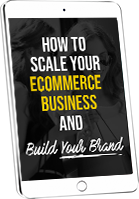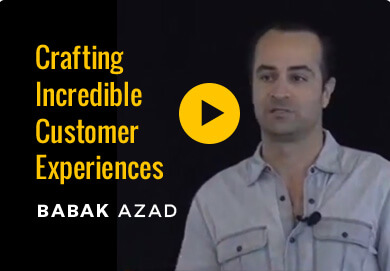In one of 2PM‘s recent Member Brief’s, (article is here – behind a paywall), he describes the reaction to his Brand-First Strategy. (In a nutshell, it’s an outgrowth of the growing CAC’s, at least in bigger digital channels. And that those who’ve used aggressive performance marketing strategies are struggling a bit to continue their growth. The Brand-First Strategy is more focused on content to build a community, then leading to commerce. Build the audience, then sell to them. I have separate thoughts on the specific strategy which I’ll save for a different post (it makes sense, it’s just expensive and only a few handfuls have executed well).
Back to the 2PM article. In it, he references a side conversation that occurred after his piece. There, he quotes Tonal’s founder Nate Bosshard as saying, “Seems like a straw man argument. What marketing executive has ever said “ignore brand?”
As a good friend of mine would say, I don’t think that’s the right question.
Instead, my experience with performance marketers over the years has been that’s it’s not that they SAY “ignore brand”. It’s just that they IGNORE THE BRAND. Not all of them of course, but I think it’s fair to say that it’s more often than not. And I find it’s not intentionally doing so, which is what I took from Nate’s comment above. Rather, it’s that so many of them have gotten so focused on growing a business, loving the process, getting customers, driving sales – that “brand” just doesn’t come up.
To be clear, for me, “brand” really is about paying attention to and taking care of the product and the customer. Which is crazy to think that so many people don’t really pay attention to either. They may say they do, but really they just love making money – often at the expense of brand. By the way, I’m nowhere close to perfect in this regard and am not trying to take a self-righteous approach here as you’ll see in the next paragraph.
When I was at Beachbody, so many of our decisions were driven in large part by the nearer-term, quantitative results – whether of an A/B test or otherwise. I’ll give you an example of something I did which in retrospect was understandable intellectually but short-sighted from the brand side. Early on in my time there, I made a decision to remove an extra set of handles for our resistance bands from a box so customers would have 1 set of handles, not two, for the 3 bands we provided. It made us more money, and I simply figured customers could switch handles between bands. Great short-term financial decision. Horrible for the customer – those handles were brutal to take on and off. (My bad if that affected you.) That might seem like such a simple and basic example, but it reflects the thinking that occurs in so many businesses today – save money but at the expense of the customer’s experience.
After I left Beachbody in 2015 to build my consulting business, I began speaking about bridging performance marketing and brand. More often, I was talking to bootstrapped entrepreneurs much more so than to venture-backed businesses. So that brings a slightly different type of thinking – much more financially-driven because they don”t have the level of outside funding. What i found is that the “brand” conversation fell on deaf ears. They just didn’t want to or just couldn’t hear it – given their mindset and priorities.
Which is what has led me to focus so much more on this idea of crafting an incredible customer experience. Done well, it can benefit both the performance marketing needs as well as help to build the brand. So even if you’re not bought in to the brand conversation (at least not today), and you see that crafting an incredible experience satisfies your performance marketing sensibilities (customer acquisition and retention, most notably), then that’s fine. And then if you’ve done it well, in a year or so, the brand should have started to build, and you’re happy you went down this path.
As an example, Dollar Beard Club (now The Beard Club) did this well – by tapping into identity and community (what it means to be a bearded man) in their Facebook video ads. Clearly performance marketing-driven AND it help to build their brand.
There are plenty of other examples:
-Loot Crate and Nerd Fitness do a similar job of tapping into identity and community
-Supreme New York leverages scarcity and its Thursday morning drops to drive the real-life frenzy to help customer acquisition and repeat orders
-Rover uses information transparency so that dog owners have a sense of comfort of knowing where their dog has been, benefiting both its customer acquisition and retention goals
-NOBULL creates content to engage with its customers and to drive product launches
-For Warby Parker and Stitch Fix, their business model itself was based on creating a new and different customer experience, so it served a performance marketing goal and concurrently helped to build the brand.
No one is perfect, and there are of course examples of the above companies doing things that didn’t serve either a performance or brand-driven goal. But I would argue that these businesses have realized that building their brand is not at odds with their performance marketing goals. They are not mutually exclusive but can entirely co-exist.
What that means is they’ve managed to achieve impressive financial results (both top AND bottom-line) as the brand grew. And arguably, it was their attention to brand (again, product and customer), while matched with a performance marketing set of constraints, that lead to these outcomes.
And so in thinking about Nate’s original comment, these companies clearly did the opposite of saying they wanted to ignore the brand. They were intentional about making it a priority.
As for others, it’s a rare company that says they actively want to ignore the brand. And to those who just do so – whether believing it’s not important or they can’t afford it – I’d offer some of the above as examples and inspiration to start doing so.
If you’re interested in seeing further examples and contexts of where to create incredible customer experiences, I’m in the midst of writing a book on the topic. You can see some of my thinking here. I also share my eCommerce Framework, which ends with a lengthy section on the categories and companies (70+ in total) that I’m featuring in my book.
A final note here. I’ve found that many performance marketers fear that focusing on brand means that they’re now a brand marketer. Which sounds like a big insult to brand marketers. But it’s not the label but rather the feeling that they’ll be doing things that aren’t measurable, or at least not as measurable as what they’re accustomed to. Again, I would simply say to start by trying to create an experience in the context of the performance marketing goals. That doesn’t mean spend a bunch of money and don’t track it. But to the extent you can be intentional about what you’re trying to create longer-term and you use those goals with your acquisition or retention goals, you’ll be much farther down the path of building a successful and sustainable business (er, brand).






Leave a Reply
You must be logged in to post a comment.